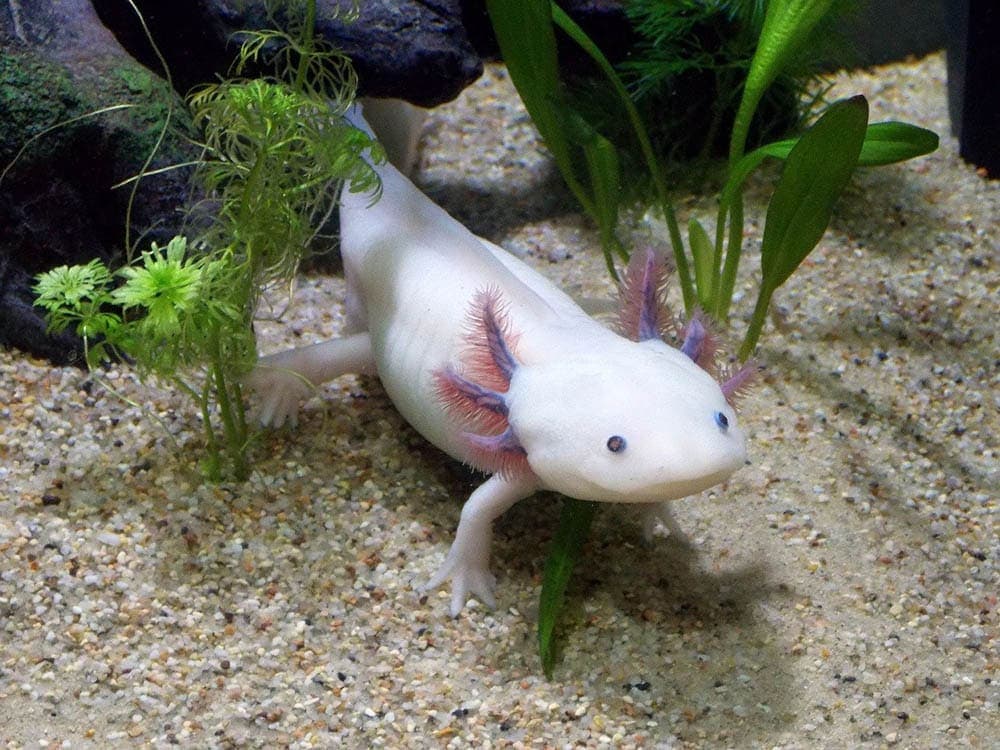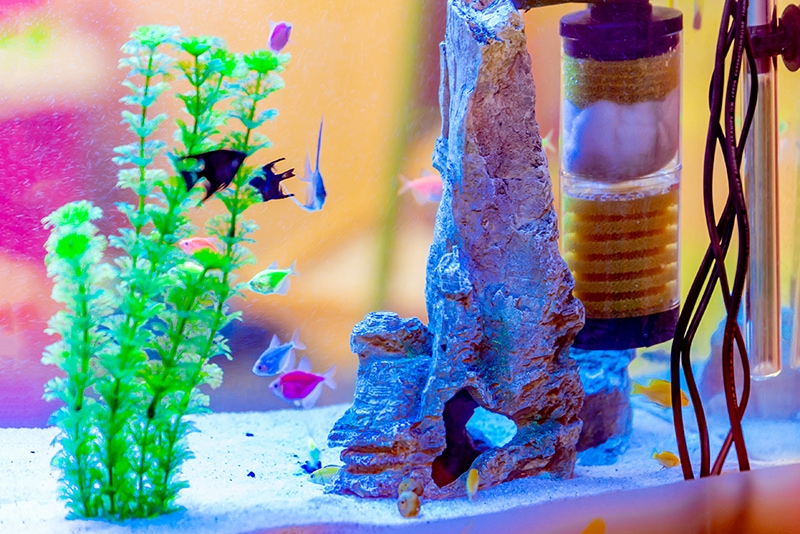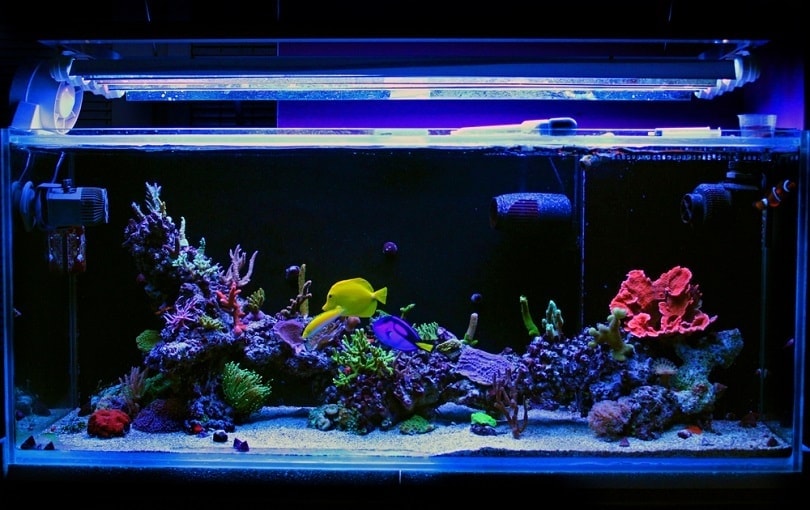How Many Clown Loach Fish Can You Have In A 55 Gallon Tank?

Updated on
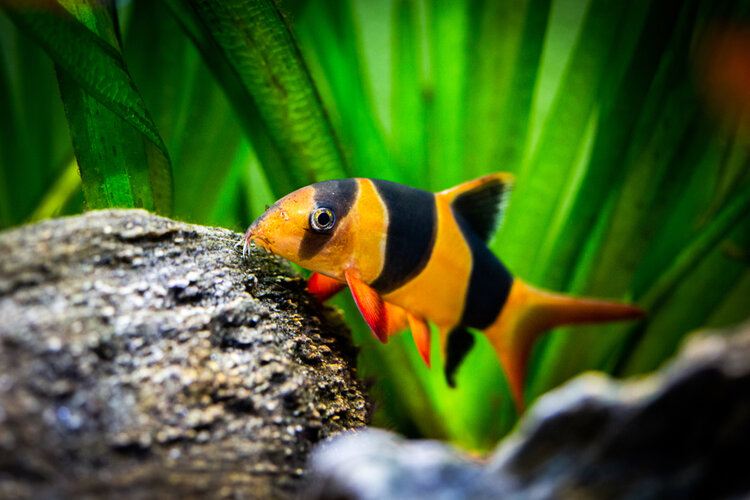
Clown loaches are beautiful fish with their black and yellow stripes. For those of you who don’t know, they can get quite large, and they need a good deal of tank space to be happy.
You might wonder how many clown loaches fit comfortably in a 55-gallon tank. Each adult clown loach requires 30 gallons of space so you could house one in a 55-gallon tank, but this is not recommended, as they are a schooling fish who should be kept in a group of at least five, which would mean a tank size of 150 gallons.
You could, however, house up to four juvenile clown loaches in a 55-gallon tank, but it should only be for the short term. Once they grow to the adult size, you need to move them to a bigger tank based on the guideline of 30 gallons per fish.
How Many Clown Loaches Should I Get?
Clown loaches are schooling fish. They do not like to be alone and should be kept in groups. At the very least, you should consider keeping about five of them together (which requires a tank size of 150+ gallons). Do not keep clown loaches alone; they find safety in numbers.
How Big Will A Clown Loach Get?
Clown loaches like having lots of space. Your average clown loach will grow about 8 inches long, with the largest specimens maxing out at a full foot (12 inches).
Minimum Tank Size for Clown Loaches
Generally, each clown loach should have no less than 30 gallons of tank space. Moreover, seeing as you should keep at least five clown loaches together, you will need a tank that is at least 150 gallons for a small school of five.
Clown Loach Housing Requirements

The tank size is not the only important aspect regarding clown loaches. There are a few housing requirements that you need to meet for them so they will be happy and healthy.
Water Temperature
Clown loaches are tropical fish that prefer their water to be very warm. They require the water temperature to be between 78 and 87 degrees Fahrenheit or about 25 to 30 degrees Celsius.
Chances are almost 100% that you will need an aquarium heater for the fish because, unless you live in a very warm part of the world, you will never be able to maintain the water temperature. You can buy an aquarium thermometer so you can keep the temperature within the acceptable range (with the warmer part of the range being the ideal).
Water Hardness
Clown loaches require their water to be softer since they do not do well in waters that have lots of dissolved minerals. Get a water testing kit and water conditioner, and aim to keep the water at a dGH level no above 12.
Water pH
Clown loaches are susceptible to pH levels that are not in the ideal range. They will get sick if the pH is not kept right, and the range is narrow. The acceptable pH level for clown loaches is between 6.5 and 7.0, which you might recognize as slightly acidic.
A perfectly neutral pH of 7.0 is acceptable, but slightly acidic, somewhere around 6.7, is best. Therefore, you need a pH testing kit for your aquarium.
Filtration & Aeration
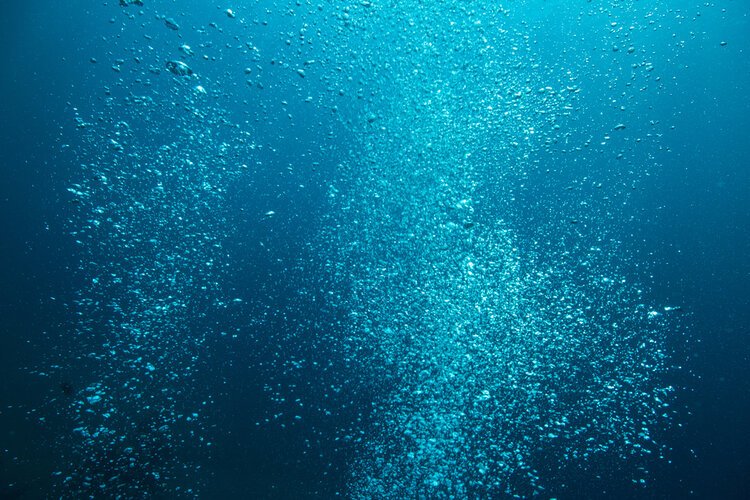
Clown loaches are big, they eat a lot, and they produce a good amount of waste, but they do not like dirty water. Moreover, they are used to having strong currents in their waters. Therefore, you need a large hang-on-a-back filter or a canister filter that engages in all three forms of filtration, including mechanical, biological, and chemical.
Since they like clean and fast-moving water, you want a filter that can handle at least three to five times the water volume in the tank per hour. So, for a 150-gallon tank, you want the filter to handle between 450 and 750 gallons of water per hour, and adjustable outtake nozzles to create a strong current in a specific direction are recommended.
With a strong filter, you should have no problems when it comes to keeping the tank aerated and oxygenated.
Lighting
Clown loaches are not big fans of bright waters. In the wild, they usually live in low-light conditions. They are bottom feeders, and the lower depths of their natural habitat are fairly dark.
Combine this with the fact that clown loaches live in heavily vegetated environments in the wild, which produce a lot of shade from the sun above. Therefore, a dim or moderately bright aquarium light will do just fine.
Substrate
Clown loaches are bottom feeders and like to forage for food in soft substrate. Therefore, the best substrate for clown loaches is sand. About 2 to 3 inches of sand should suffice.
If, for whatever reason, you don’t want to use sand, fine and smooth gravel will also do. Just ensure the gravel is not rough since clown loaches can injure themselves on pointy gravel.
Plants
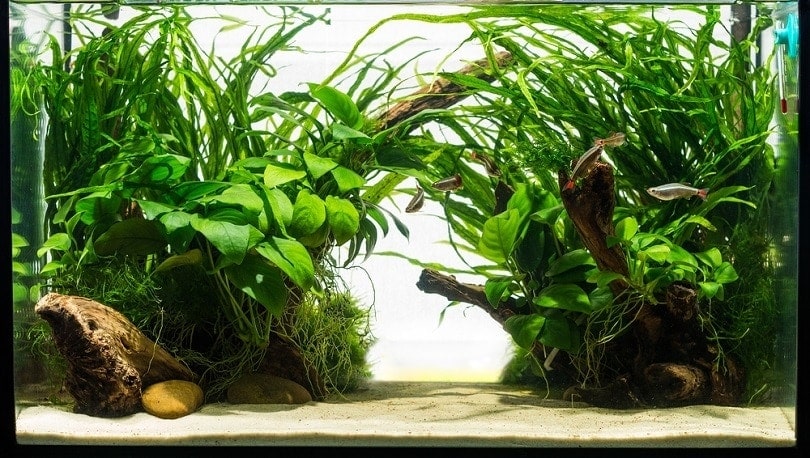
When it comes to plants for your tank, you need hardy and strong plants with sound root systems. Clown loaches can be hard on plants; they may try to eat and uproot them. Therefore, large and fast-growing background plants are recommended. You can also add floating plants to provide cover for your loaches.
Rocks & Deco
You need to add a few good hiding spaces for your clown loaches. They like squeezing themselves into fairly tight spots to hide. Therefore, having a few pieces of driftwood and rock caves is recommended.
Tank Mates
Clown loaches are peaceful fish, but they are scavengers and bottom feeders. They will usually never try to eat live fish. Therefore, they make excellent community tank fish.
Good examples of tank mates include neon tetras and other tetras, tiger barbs and cherry barbs, yo-yo loaches, discus fish, angelfish, and anything smaller or more peaceful than the clown loach.
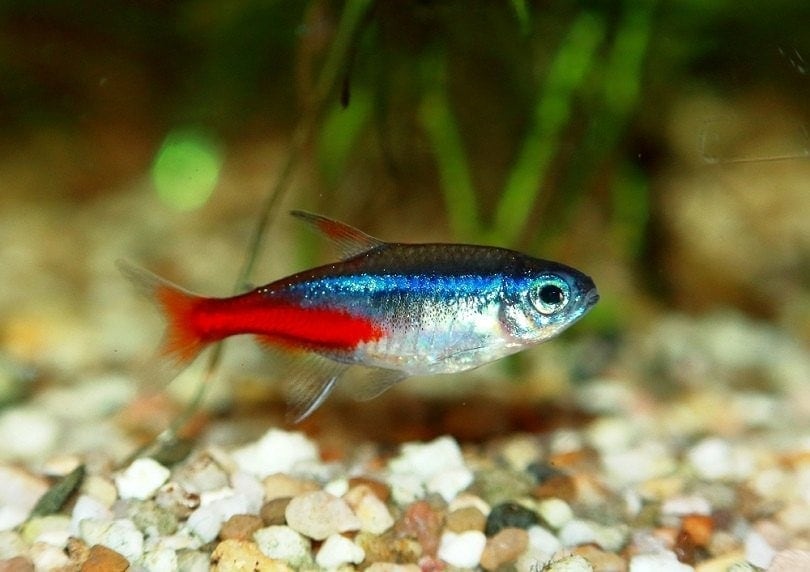
FAQs
Are Clown Loaches Hard to Keep?
Generally speaking, clown loaches are easy to care for. Sure, they need a large tank, quite a specific pH level, and a high water temperature, but other than that, there is not too much to worry about.
Will a Clown Loach Eat Other Fish?
No, they are scavengers and bottom feeders who rarely if ever, try to attack or eat other fish.
Can I Keep One Clown Loach?
No, clown loaches are schooling fish. They do not like to be kept alone and should be kept in schools of five or six.
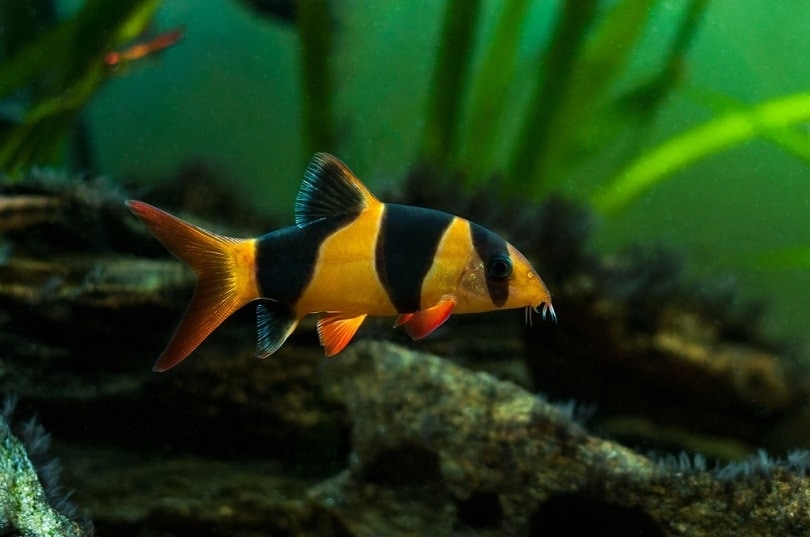
Conclusion
Clown loaches are ideal fish for amateur aquarists, but they must be kept in schools to thrive and remain healthy. Since they spend most of their lives on the bottom of the tank, they’re unlikely to bother your other fish swimming in the middle or near the surface. As long as you provide a large tank for the school and maintain the proper water parameters, your clown loaches will entertain you for several years.
Related Read:
- Why is Aquarium Driftwood So Expensive? Reasons, Types, & Process
- What Was Fish School? Origin, History & Current Status
Featured Photo Credit: Joan Carles Juarez, Shutterstock




